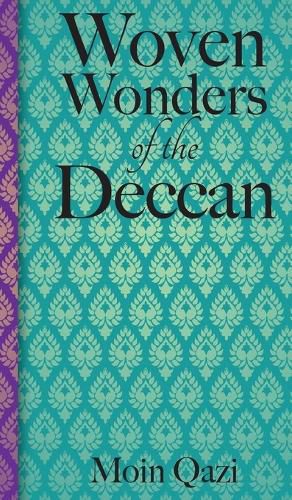Readings Newsletter
Become a Readings Member to make your shopping experience even easier.
Sign in or sign up for free!
You’re not far away from qualifying for FREE standard shipping within Australia
You’ve qualified for FREE standard shipping within Australia
The cart is loading…






This title is printed to order. This book may have been self-published. If so, we cannot guarantee the quality of the content. In the main most books will have gone through the editing process however some may not. We therefore suggest that you be aware of this before ordering this book. If in doubt check either the author or publisher’s details as we are unable to accept any returns unless they are faulty. Please contact us if you have any questions.
Indian hand woven fabrics have been known since time immemorial. Poets of the Mughal durbar likened our muslins to baft hawa (woven air), abe rawan (running water) and shabnam (morning dew). A tale runs that Emperor Aurangzeb had a fit of rage when he one day saw his daughter princess Zeb-un-Nissa clad in almost nothing. On being severely rebuked, the princess explained that she had not one but seven jamahs (dresses) on her body. Such was the fineness of the hand woven fabrics..The author, who has spent several decades working for the promotion of handicrafts, provides unique insights into the lives of weavers striving to preserve the traditional textiles of the Deccan.
$9.00 standard shipping within Australia
FREE standard shipping within Australia for orders over $100.00
Express & International shipping calculated at checkout
This title is printed to order. This book may have been self-published. If so, we cannot guarantee the quality of the content. In the main most books will have gone through the editing process however some may not. We therefore suggest that you be aware of this before ordering this book. If in doubt check either the author or publisher’s details as we are unable to accept any returns unless they are faulty. Please contact us if you have any questions.
Indian hand woven fabrics have been known since time immemorial. Poets of the Mughal durbar likened our muslins to baft hawa (woven air), abe rawan (running water) and shabnam (morning dew). A tale runs that Emperor Aurangzeb had a fit of rage when he one day saw his daughter princess Zeb-un-Nissa clad in almost nothing. On being severely rebuked, the princess explained that she had not one but seven jamahs (dresses) on her body. Such was the fineness of the hand woven fabrics..The author, who has spent several decades working for the promotion of handicrafts, provides unique insights into the lives of weavers striving to preserve the traditional textiles of the Deccan.